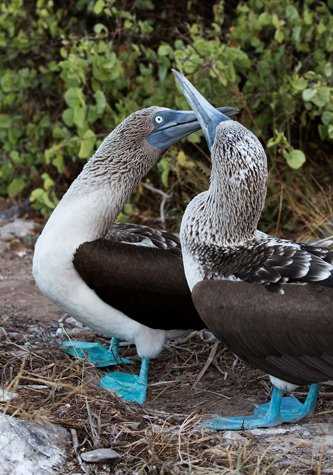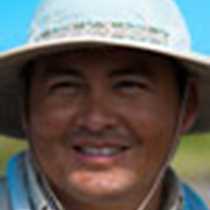Our second day of exploration took us to the southeastern island of Española, formerly known as Hood. This is the oldest island in the archipelago, and it shows the highest number of endemic species.
We spent the morning at Gardner Bay, the site of one of the most beautiful white coral sand beaches in Galapagos, where dozens of resting and cavorting sea lions were found. While some guests went to explore the underwater world at the small offshore islet of Gardner, other ones went to the beach to swim, learn some snorkel tips and of course enjoy the unique scenery.
In the afternoon, we repositioned the National Geographic Endeavour to visit another part of the island, Punta Suarez, one of the richest wildlife locations in Galapagos. Sea lions and marine iguanas were right at the landing site, waiting to greet us, and further along the trail, blue-footed and Nazca boobies were courting or nesting. Finally, we came across the amazing endemic waved albatrosses, who were displaying, courting, and starting their nesting season. While admiring these fascinating animals, including the unique lava lizards, mockingbirds and Darwin's finches, we also learned about the impact that these unique species had on Charles Darwin, inspiring him to shape his novel concept of natural selection and survival of the fittest, which changed the evolutionary science forever.
This is the same world that he visited in 1835, and we will see how each volcanic island has its own unique character, some young and still actively growing, others succumbing to the forces of erosion. The wildlife and flora reflect these differences, and each day we will discover why the islands of the Galapagos are so special and unique.










